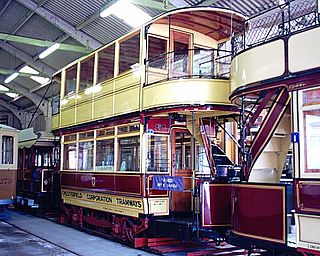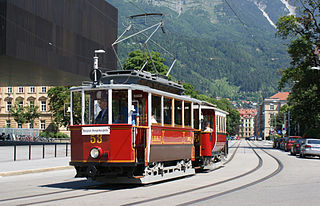This article has multiple issues. Please help improve it or discuss these issues on the talk page . (Learn how and when to remove these template messages)
|


As of the middle 2011, trams are one of the basic types of public transportation in the city of Odessa, Ukraine. Odessa is served by 19 regular, and 5 non-regular, tram routes. Electric trams have been operating in Odessa since 1910. [1]
Contents
- Route network
- Additional routes
- Closed routes and phantom routes (after 1990)
- References
- External links
The tram network is laid along mainline streets from the city center, serving as a convenient connection with the more outward neighborhoods of Odessa. System facts are:
- As of early 2011, Odessa has 210 Tatra T3 tramcars, 106 of them having been modernized.
- In 2006, К-1 tramcars started to be delivered. They are manufactured on Yuzhmash plant in Dnipropetrovsk. There are also Tatra-Yug trams, manufactured there.
- For heritage purposes, there is one pseudo-Nievelles retro tram, which was made out of MTV-82 tram.
- The Odessa Tram Network is served by two depots. One is located near the railway station, the other is located in Slobodka (in the western part of the city). A service tram depot (located near "Tovarnaja" station) used to house some of the passenger service routes 1996, but it now houses only service trams.
- As of November 2016, the lines in vul Preobrazhenska, vul Tyraspilska, and vul Nizhynska were out of service. A new roundabout at the junction of these lines was being constructed, with excavation to a depth of 1 metre for two blocks either side in vul Preobrazhenska. At the bottom of the trench was being poured slab concrete. Track for the roundabout was being fabricated in situ from straight rails. It is estimated that the work would take several more months.
- As of November 2016, the track in vul Novoshepnoy Ryad was in poor condition, the asphalt road surface having disappeared where it flanked the Privoz market, pointwork at vul Preobazhenska was in poor condition. Speed of trams in this street was low on account of the exposed rails, and cars and trucks travelling at walking pace over the rough surface.
- As of October 2018, the roundabout in vul Preobrazhenska was in operation, allowing trams to enter and leave in any direction along the streets mentioned previously.
- Operational difficulties plague the system. The track and pointwork in vul Noveshepnoy and vicinity are unchanged from 2016. Services along two routes ceased for long periods on the same day in 2018. This is the result of three factors: One is the removal of turn-back facilities that enabled trams to service part of the route when there is a breakdown or accident (example, lines 12 and 3 near Fine Arts Museum). Another is the removal of cross links that would enable a tram to reach a destination via another route when a breakdown occurs (example, vul Stelova). The third is attributable to the continued used of single-ended trams. With a double-ended tram, a turn-back is possible wherever there is a shunt. Single-ended trams need a loop or a turnout to a cusp, to enable the tram to travel in the opposite direction on the other track.














